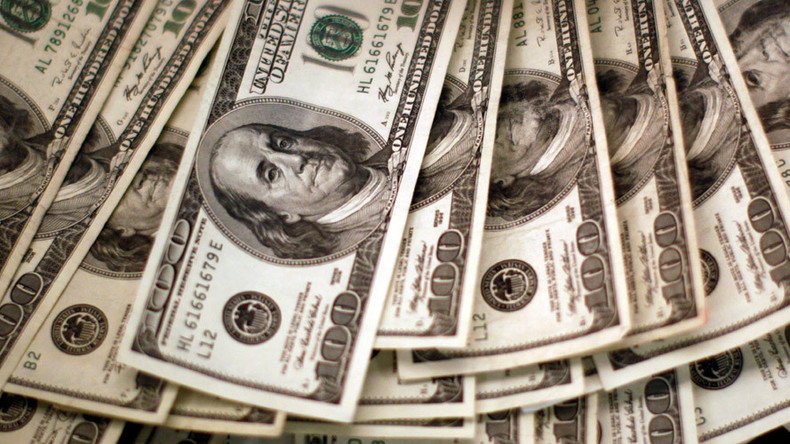Bottom 99% has best income year in 17 years – but top 1% did twice as well, study finds

In 2015, the bottom 99 percent of income earners in the US had the best real income growth in 17 years, at 3.3 percent over 2014 levels, according to a new analysis. But the top 1 percent saw a 7.7 percent increase in the same time period.
The bottom 99 percent saw a second consecutive year of income recovery, taking into account inflation, since the Great Recession that began in 2007, according to economist Emmanuel Saez, who released a new report for the Washington Center for Equitable Growth. The analysis was based on Internal Revenue Service data on pre-tax earnings in America.
Yet Saez found that despite the rise, "a full recovery in income growth for the bottom 99 percent remains elusive."
"After a large decline of 11.6 percent from 2007 to 2009, real incomes of the bottom 99 percent of families registered a negligible 1.1 percent gain from 2009 to 2013, and then grew by 6.0 percent from 2013 to 2015," wrote Saez, a professor of economics at the University of California-Berkeley.
Incomes for the bottom 99% of families grew by 3.9% in 2015. Incomes for top 1% grew by 7.7% https://t.co/geTNYha87rpic.twitter.com/pldr3QYBxx
— Equitable Growth (@equitablegrowth) July 1, 2016
Since the Great Recession officially ended in 2009, the bottom 99 percent has "recovered only about sixty percent of their income losses due to that severe economic downturn," he wrote.
The top one percent, meanwhile, did much better in 2015 than the bottom 99 percent, Saez found.
"The share of income going to the top 1 percent of families—those earning on average about $1.4 million a year—increased to 22.0 percent in 2015 from 21.4 percent in 2014," Saez said.
The top 10 percent of income earners fared well, too. Those making an average of around $300,000 a year saw their share of income increase "to 50.5 percent in 2015 from 50.0 percent in 2014, the highest ever except for 2012," Saez wrote.
The top 1% of families captured 52% of total real income growth from '09-'15. https://t.co/geTNYha87rpic.twitter.com/XrAsfxgZix
— Equitable Growth (@equitablegrowth) July 1, 2016
For the top one percent, incomes adjusted for inflation went up from $990,000 in 2009 to $1,360,000 in 2015, a 37-percent increase, according to Saez.
For the bottom 99 percent, incomes went up from $45,300 in 2009 to $48,800 in 2015, a 7.6-percent increase.
The top one percent of families took in 52 percent of total real income growth per family from 2009 to 2015, Saez reported, while the bottom 99 percent of families had 48 percent of total real income growth.
"This uneven recovery is unfortunately on par with a long-term widening of inequality since 1980, when the top 1 percent of families began to capture a disproportionate share of economic growth," Saez wrote.
Saez also said that higher tax rates for top income earners — which came into effect in 2013 following a tax deal negotiated by President Barack Obama with congressional Republicans — will do little to stem worsening income inequality in the US.
"The higher top tax rates, which started in 2013, did not prevent broadly shared economic growth from picking up in 2014 and especially 2015," Saez wrote "At the same time, they did not have a significant impact on reducing pre-tax income inequality. ... Therefore, it seems unlikely that U.S. income concentration will fall much in the coming years, absent more drastic policy changes."
While the Great Recession was declared over in 2009, the painful impacts have lingered for many, as Saez noted. A recent Harvard University study found that, over the last six years, the number of Americans paying half their salary on rent has grown from 2.1 million to 11.4 million.
In the last 35 years, the richest one percent of Americans saw their market income increase 10 times more than the 99 percent, according to recent report by the Congressional Budget Office (CBO).
“Market income in 2013 for households in the top 1 percent was 188 percent higher than it was in 1979,” the CBO said in the report this month. “For households in the bottom four income quintiles, market income was 18 percent higher in 2013 than it was in 1979.”















